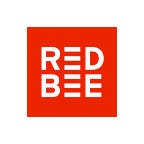What’s in a name? The case for ‘TV’ ‘Channels’
I asked my 5-year-old nephew what a TV channel was the other day.
“It’s like Netflix” he informed me.
It struck a chord because the question of the relevance of the words ‘TV’ and ‘Channel’ has come up many times with clients over the years who wonder if their product naming conventions are holding them back, making them sound old-fashioned, pre-digital and irrelevant. Courteney Monroe, President of National Geographic Global Television Networks, summed that position up when she explained the rationale behind her company dropping the ‘Channel’ bit from National Geographic Channel back in 2016: “[‘Channel’] suggests this linear television destinations [sic] and increasingly that’s not the way people are consuming us.”
Of course she was right that audiences consume entertainment differently today than they used to. But I’d put money down that the average viewer would have little idea of what we mean by ‘linear’ and are capable of migrating their viewing onto a new device without needing a modified brand name to tell them how to do it.
Then just last month, Sky’s streaming platform in Europe, NowTV, rebranded to ‘Now.’ According to the press release, the new name “reflects how brilliant simplicity meets brilliant entertainment.” I’m going to venture a guess that no one has ever complained that the problem with NowTV was that its name wasn’t an accurate descriptor of its brilliantly simple product offer.
Meanwhile the digital and streaming companies that TV marketers lie awake at night worrying about, have been embracing good ol’ TV language to describe their entertainment offerings. Netflix, Apple TV, YouTube, Roku, and Amazon Prime all use one or both of the words ‘TV’ and ‘Channel’ across their services. They use it to describe their products and offers, to showcase to audiences the premium content they carry, and to bundle content into useful buckets. Presumably they use that language because it’s clear, descriptive, and helps people navigate to what they want to watch.
This isn’t to say that TV brands need a product descriptor in their brand name or logo to be successful. Our most famous rebrand was when we turned UKTV G2 into Dave, forever changing the fortunes of that brand. But even Dave uses his surname in social. On Instagram, @dave_tvchannel removes any doubt in a viewer’s mind about which Dave they’re following.
So, if you’re a TV brand with ‘TV’, ‘Channel’, or even ‘Network, in your name, don’t fear. Those are not words from a bygone era that refer to defunct technology. They are relevant product descriptors that help audiences understand who you are and help them to find you. You may not choose to use the whole combination of words in your logo mark, but you’ll probably need to use one of those words to help audiences find you online. And, as audiences get more comfortable with voice search, it will help them to find you if they’re clear on what to ask for. Alexa is going to get pretty miffed at the demanding people asking her to “watch Now.”
I told my nephew that technically, no, Netflix is not a TV channel. He didn’t seem bothered.
“So…can I play CBBC now?”
